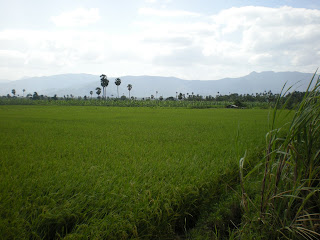




Pattern of Exams:
General Students: answer all questions.
OBCs: answer any one question
SCs: only read questions
STs: thanks for coming
Gujjars: thanks for allowing others to attend the examination!!
Never question your wife’s judgement…look whom she married.
A person doing self SWOT analysis:
Strength is my wife; weakness is my neighbour’s wife; opportunity is when my neighbour is on tour; threat is when I am on tour.
Que. What makes a happy man?
Ans. Daughter is on the cover of Vogue, son on the cover of Sports Illustrated, mistress on the cover of Playboy and wife on the cover of Missing persons.
MENtal illness, MENstrual cramps, MENtal breakdown, MENopause
Ever notice how all of women's problems start with MEN?
Son: Mom, when I was on the bus with Dad this morning, he told me to give up my seat to a lady.
Mom: Well, you have done the right thing.
Son: But mum, I was sitting on daddy's lap.
**********
A newly married man asked his wife, "Would you have married me if my father hadn't left me a fortune?"
"Honey," the woman replied sweetly, "I'd have married you NO MATTER WHO LEFT YOU A FORTUNE"
**********
Father to son after exam: "let me see your report card."
Son: "My friend just borrowed it. He wants to scare his parents."
**********
Interviewer to Millionaire: To whom do you owe your success as a millionaire? "
Millionaire: "I owe everything to my wife."
Interviewer: "Wow, she must be some woman. What were you before you married her?"
Millionaire: "Billionaire"
**********
Girl to her boyfriend: One kiss and I'll be yours forever.
The guy replies: Thanks for the warning.
**********
A wife asked her husband: "What do you like most in me my pretty face or my sexy body?"
He looked at her from head to toe and replied: "I like your sense of humour.




 It is a thick set, ground dwelling snake, with a small conical head and large nostrils. Dorsum brown, with three rows of spots along the body, the belly is cream in colour. It lives in grasslands or scrub forests. They are aggressive once threatened or disturbed. The smaller ones are much more aggressive than adults. Once agitated, they produce a high pitched hissing sound which is audible from even a few meters away.
It is a thick set, ground dwelling snake, with a small conical head and large nostrils. Dorsum brown, with three rows of spots along the body, the belly is cream in colour. It lives in grasslands or scrub forests. They are aggressive once threatened or disturbed. The smaller ones are much more aggressive than adults. Once agitated, they produce a high pitched hissing sound which is audible from even a few meters away.
 The krait is largely nocturnal in nature. While it stays hidden & dormant during the day, it becomes very alert at night. Its body is glossy black with paired bands on the body. Widely spread over the Indian subcontinent . Studies indicate the venom is more toxic than that of a cobra. The snake often enters people’s houses in its quest to find a cool place. People get bitten when they step on the snake accidentally.
The krait is largely nocturnal in nature. While it stays hidden & dormant during the day, it becomes very alert at night. Its body is glossy black with paired bands on the body. Widely spread over the Indian subcontinent . Studies indicate the venom is more toxic than that of a cobra. The snake often enters people’s houses in its quest to find a cool place. People get bitten when they step on the snake accidentally.






































